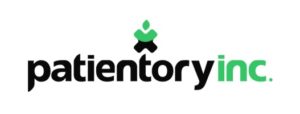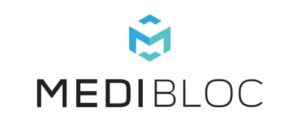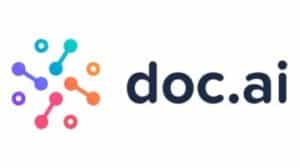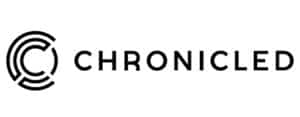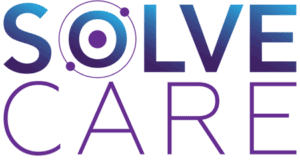When I read blogs about blockchain technology in the healthcare industry, I get mad. No, seriously. Marketing people with little to no understanding of blockchain keep praising how the technology will revolutionize medicine. They even use the same words as they did five years ago when talking about existing solutions for healthcare.
Where are all those innovations of blockchain in the medical field (beyond proofs-of-concepts), and why are they so scarce in real-life environments? What holds back the wide adoption of blockchain applications in medicine, and how should we use them to drive real value across the board?
If you are serious about blockchain and healthcare, here is the place to find the answers and explore notable blockchain use cases in healthcare.
Table of Contents:
- Blockchain Basics
- Is Your Healthcare Business Ready for Blockchain?
- Advantages of Blockchain in Healthcare
- Blockchain in EHR Management
- Blockchain in Supply Chain Management
- Smart Contracts and Blockchain in Medical Research
- Claims Adjudication
- Care Network Automation
- How to Implement Blockchain in Healthcare
- Security Aspect of Blockchain in Healthcare
- Blockchain Limitations in Healthcare
- Top 3 Blockchain Startups in the Healthcare Industry
- Advanced Blockchain Concepts
- The Future of Blockchain in Healthcare
Blockchain Basics
Blockchain can be thought of as a minified version of the internet where computers are connected to each other directly, without a central server. The reason they connect is to store data and carry out transactions with this data. What makes this setup different from any peer-to-peer network is its architecture that ensures that data on the blockchain remains:
- immutable (you can’t edit it once it’s been written)
- transparent (all blockchain participants have access to all transactions)
- tamper-proof (a transaction is added if the majority of participants thinks it’s valid)
- decentralized (the same replica of data is stored on every computer connected to the chain, and there’s no central authority to regulate the process)
- secure (every transaction is encrypted)
You also need to know that there exist two major types of blockchain: public and private, also known as permissionless and permissioned networks. The difference is a public network is open to everybody, e.g., anyone can join the Bitcoin network and start trading or mining Bitcoin, while private chains have control over who joins them.
Blockchain is also the underlying technology for virtual currency called CRYPTOCURRENCY, and a good many of blockchain-based projects revolve around digital tokens used to obtain services or goods on a chain.
However, the blockchain healthcare market isn’t too rich on crypto, probably due to the high volatility of cryptocurrencies. Nobody wants to pay for a dental filling and find out a couple months later they could buy a house now for the crypto they spent.
There are just a little over 20 healthcare-specific crypto tokens right now, dwarfed by over 4,500 digital currency tokens overall on the market.
Other terms you can often hear whenever blockchains are discussed include HASH, NODE, and LEDGER. Let’s quickly recap those too to avoid any ambiguity.
LEDGER (or distributed ledger), when used in the context of blockchain development, is basically the same thing as blockchain.
NODE is any computer connected to a ledger and taking part in computations and block adding. Nodes communicate with each other and serve the on-chain data validation purpose through consensus.
CONSENSUS PROTOCOL determines how validation of data happens on a chain. Without going too technical on that, let’s just say that different blockchains have different consensus algorithms for validation of transactions:
- Proof of Work (PoW, requires the most computing power)
- Proof of Stake (PoS algorithm, the most promising consensus mechanism)
- Practical Byzantine Fault Tolerance
- Simplified Byzantine Fault Tolerance
- Proof of Capacity
- Proof of Authority (PoA)
- Proof of Elapsed Time (PoET)
- Directed Acyclic Graphs (DAGs)
- Proof of Burn
HASH is just a string of characters that represents the contents of a block. Think of the hash function as a unique identifier of this block. Every new block contains a set of transactions confirmed by nodes, and it also includes hash code from the previous block to maintain integrity.
You can catch up on all these terms in Blockchain Technology Overview by The National Institute of Standards and Technology (NIST).
Is Your Healthcare Business Ready for Blockchain?
How do you know if you’re ready for implementing a blockchain solution in your healthcare practice? Well, you need to look at the core blockchain attributes and determine if they fit to serve your business goals.
Transactions
Every blockchain has transactions at its core. Are you looking to streamline transactions happening between multiple parties, such as patients, healthcare organizations, insurers, etc. with a healthcare solution on a shared ledger?
Trust
Decentralization removes the need for a central authority to validate transactions. Participants of a blockchain-based system rely on validating nodes instead. Do you see this feature adding value to how your users interact with each other?
Zero intermediaries
Are you working on a health record data management platform that operates autonomously and benefits from having no intermediaries? Since data (e.g., credential verification) can be validated by the blockchain, the operational costs go down significantly.
Enhanced security
Public key cryptography mechanisms ensure data integrity and make it impossible for unauthorized parties to tamper with data stored on-chain.
Essentially, a healthcare blockchain system introduces novel business models focused around p2p networks and bringing the customer front and center. That may sound counterintuitive, but a health care ecosystem built on a shared ledger propels the consumer-centric paradigm.
Advantages of Blockchain in Healthcare
If you ask Gartner, they believe that the golden age for medical blockchain technology will come around 2030. Note how crypto and “pure” blockchain have almost made it to the phase of real-life implementations, and medicine blockchain is still in the hype phase.
Is it really that bad? Do we need to wait another 10 years to see distributed ledger as part of the healthcare system and in healthcare app development in general? To make a long story short, there are some ways to cut through the chase and pioneer blockchain technology applications in health care. So sit tight, and let’s start with going through the list of all the things blockchain promises to elevate in medicine:
- democratized electronic health records
- streamlined transparent payments between patients, clinics, and insurers
- improvements to supply chains for drugs tracking
- medical research and clinical trials
What blockchain properties enable these use cases for the healthcare sector?
- built-in support for cryptography allows secure authentication of users
Healthcare providers and patients can individually login into a decentralized health app and still maintain their privacy, protected by a cryptographic hash (a specific cryptographic algorithm for digital health data protection)
- autonomous smart contracts can replace traditional paper legal contracts
Automatically executing programmable contracts simplify data exchange and ensure flawless performance of health dapps 24/7.
- as a trustless system, blockchain keeps a trail of health information
Even though not all medical data records are stored on-chain, they can be validated by comparing against on-chain calculated hash values.
I’d say the use cases listed above are more or less realistic goals worth exploring. Now, let’s see what’s feasible and what the biggest blockchain opportunities for health care are.
Blockchain in EHR management
If you’ve carefully read the blockchain basics above, you may already guess that technology-wise, blockchain holds both advantages and limitations for implementations in healthcare.
The first thing you’ll hear ledger proponents selling is that it’s an ideal solution to share data via electronic health records (EHR). So let’s see how this technology fares in this area.
Implementing blockchain-based EHR
The first impression is EMR (electronic medical records) and blockchain is a match made in heaven, right?
According to research at the Johns Hopkins University, medical errors are the third leading reason for deaths in the U.S. states. Even if storing patient data on-chain could solve only this issue, that would already be more than enough. However, chain-based medical records promise a lot more:
- providers securely access patient records
- patients get to decide who can work with their data
- data remains in sync between patients and providers
- data is encrypted and HIPAA compliant
Related: HIPAA Compliant Application Development Guide
What’s not to like? Well, there must be a reason why blockchain-based EHRs remain, for the most part, prototypes.
Main challenges
Now let’s see what skeptics have to say.
First of all, permissionless networks are notoriously slow. For example, the Bitcoin chain can guarantee only 4-5 transactions per second, which is too few for the grandiose scale of the U.S. healthcare system.
This can be remedied by building private blockchains, but then the main advantage of having everybody on the same decentralized chain quickly evaporates. As an alternative, you can pick a relatively new chain with fewer users, but with a higher block throughput.
Second, every transaction on a chain has a cost. If you want to spend Bitcoin on something, you need to chip away to pay for validating your transaction.
So if we’ve built an EHR and deployed it to, say, Ethereum (the second-largest blockchain), we now need to pay with Ether for every small edit we want to make to a patient record. Again, a private (aka permissioned) blockchain solves the issue as we can set the price of transactions to null.
Finally, any blockchain is a database, remember? And a decentralized type of data storage imposes certain limitations. For instance, Ethereum is expected to grow to 1 TB by 2025. This implies hardware costs for maintaining distributed storage on all participating nodes up-to-date.
Oh, and I almost forgot to mention that you’ll need to figure out the GDPR compliance if you decide to go global. This European regulation mentions the right to be forgotten. The bummer is distributed ledgers don’t allow removing or modifying patient data off the chain without extra shenanigans.
This may not be a challenge per se, but having patient records on a decentralized chain also presumes patients will need to self-manage their records, and this may be something not many of us are accustomed to.
Possible scenario
Again, if you’ve followed along closely, you already understand that if not a cure-all, but quite a workable variant, is developing a private blockchain-based EHR solution. Such an approach will require all new members to authorize before they can start transacting on the platform.
In addition, you’d need to architect the blockchain so that nodes on the network store on-chain only meta-data. As for patient health data (medical records with imagery and other files), it needs to stay in a secured cloud, linked to the blockchain ledger. That will increase the speed of operations within the EHR dramatically.
So in effect, when creating an EHR product using blockchain, you’ll be merging together blockchain and good old cloud technologies like Amazon Web Services via APIs. That way, you’ll be able to integrate with off-chain data sets.
Noteworthy use cases
Patientory
Patientory is a blockchain-based EHR solution that avoids being called that and prefers the metaphor of a bridge connecting siloed medical and health record-keeping systems. The company takes a user-centric approach, connecting patients with care providers via a mobile app. Patients pay for storing their data on the chain with a proprietary cryptocurrency.
To record transactions, patients need to spend virtual currency, and then providers and patients can encrypt and decrypt info using the underlying blockchain technology.
Medibloc
Medibloc is a startup working on several healthcare products for early adopters, one of which is Dr.Palette — a blockchain-powered EMR (helps encrypt data) that works through a mobile app for patients and provides a web interface for doctors.
Blockchain in Supply Chain Management
The next best thing distributed ledger technology can do for healthcare is to help us verify medicine’s origin and make sure we use legal, credible drugs from real pharmaceutical companies.
Apparently, the pharma industry keeps losing billions because of counterfeit drugs every year. So it definitely adds business value to have a decentralized system with automatically trackable medicine and assets throughout the supply chain where it’s nearly impossible to forge a drug.
Implementing blockchain-based medical supply chains
What makes blockchain so effective in this scenario is equal access of all participants to the ledger with the single truth source. In addition, a blockchain-powered solution helps improve:
- administrative operations
- transparency and traceability of intermediaries’ transactions
Main challenges
As with patient records, pharmaceutical supplies tracking present practically the same challenges. So a workable scenario is to build a permissioned blockchain with known participants.
Arguably, the biggest challenge is the sheer scope of such a project that would involve multiple companies realizing the mutual benefits from implementing ledger solutions into their supply chain operations.
Besides, the companies would need to apply IoT sensors to allow automatic detection and tracking of medicine every step of the journey.
Noteworthy use cases
LedgerDomain
LedgerDomain uses blockchain technology as the back end for its mobile applications that help deliver real medications to real patients. The solution provides real-time inventory, data management, staff credential verification, and more.
HealthLine
Medsphere’s HealthLine inventory and medical supply chain management solutions reduce labor costs, make inventory more precise and automatically capture more charges. The blockchain powers apps that utilize barcode and RFID technology to enable better medicine tracking.
Smart Contracts and Blockchain in Medical Research and Clinical Trials
Smart contracts are simple programs running computer code right on a blockchain. They often have pretty straightforward if-then logic and can fire off another contract or execute a transaction automatically when predefined criteria are met.
Related: Smart Contract App Development: The Ultimate Guide
Their autonomous nature makes smart contracts an ideal solution for gathering informed patient consent for participating in clinical trials. What this breakthrough technology is doing here is actually gathering consent from a patient and making it available for a myriad of participating researchers. Consent validity is sustained by the immutability of shared data.
Furthermore, the crypto-economy potential of blockchain technology literally asks for a marketplace for trading patient data and even biosamples to aid medical research and unlock nationwide interoperability for providers.
Main challenges
Since smart contracts execute automatically, and a patient’s consent becomes available to all chain members immediately after signing, we’re stuck with a private blockchain variant again.
Noteworthy use cases
Doc.ai
Doc.ai, a Palo Alto startup acquired by Sharecare recently, focuses on enabling remote clinical research with a mobile app on a decentralized ledger. The app is set up with multi-omics modules to collect data in the most optimized manner, and the built-in AI capabilities provide advanced analytics on incoming patient data.
Nebula Genomics
Nebula Genomics has built a decentralized platform for enabling their users of DNA sequencing service to collaborate with medical institutions on research while retaining ultimate control over their data.
Claims adjudication
Claim processing is one of the most time-consuming operations in the healthcare industry that can benefit from the blockchain.
First of all, a shared ledger secures all financial transactions by storing them in an immutable and transparent, longitudinal record. In addition to that, both payers and providers can track the status of claims in real-time. As a result, everybody benefits:
- clinical administrative costs go down
- claims are resolved faster
- prices for the patient shrink too
Implementing claims adjudication in healthcare
Smart contracts are an ideal tool for realizing claim adjudication on a blockchain. The typical approach would be to connect smart contracts to real-life circumstances via specialized oracles or hook them to a data hub with an API.
Main challenges
The biggest challenge is trust: every party joining such a blockchain needs to absolutely trust other participants. On top of that, since this technology implementation requires complete transparency and change of internal workflows for insurance companies, significant investment in personnel training will be required.
Noteworthy use cases
Chronicled
Chronicled enables wholesalers with manufacturer business rules to enforce accuracy and automatically adjudicate chargebacks. Returns, credits, and resubmissions are processed by smart contracts on the chain and remain tied to the original chargeback and invoice.
Care network automation
There’s also an interesting group of blockchain medical applications that seek to attain interoperability by automating and streamlining interactions among all care networks: patients, providers, and health insurance companies.
Solutions like Solve.Care and Health Nexus focus on providing building blocks and pluggable solutions for migrating the entire spectrum of medical operations to the blockchain.
Not only do such platforms often include a cryptocurrency, but they also provide instruments for creating decentralized apps (or dapps) right on their platform. Using these applications, patients and providers can solve pretty much any medical operational challenges in personalized medicine, prescription medicine, and other areas:
- appointment scheduling
- billing and payments
- prescriptions
- claims processing
Noteworthy use cases
SolveCare
The Solve.Care platform uses blockchain as the underlying technology for coordinating care, benefits, and payments between patients, doctors, insurers, labs, pharmacies, etc. The solution also includes a crypto token for transparent transactions on the chain — Solve.coin.
How to Implement Blockchain in Healthcare
As you can see, medical blockchain technology can take different forms and manifest through various applications: web, mobile, desktop, etc. Please note that when you start blockchain implementation in healthcare, there will always be:
- a back end piece
This naturally includes the blockchain itself, self-monitoring smart contracts, and additional server databases and APIs (depending on your solution’s actual architecture).
- front end piece
This is a customer-facing application, which can be web, mobile, or both. The front end would also include a crypto wallet, which generates a private key to ensure that only the intended user can access the wallet. There’s also a public key that allows users to interact with each other on the chain. Together, the public and private keys are the essence of anonymity on the chain.
Related: How to Make a Cryptocurrency Wallet
Let’s take a look at the tech side of things and think about the technology stack you will need to design and build a product that leverages all the benefits of blockchain in healthcare.
Blockchain tech stack
To create the backbone of a healthcare blockchain solution, you will need to use one of the open-source blockchain projects. One of the most prominent players in this field has been Hyperledger. It’s an umbrella project by Linux that includes various open-source tools, libraries, and other tech bits for creating distributed ledgers.
Of course, you can always just copy an existing open-source blockchain, e.g., Ethereum, make necessary changes, deploy it to nodes, and start running a private network off Ethereum just like that. However, using the Hyperledger arsenal tools, you can create a far more advanced solution quicker by reusing ready components, e.g., advanced cryptography.
Other alternatives to Hyperledger include IPFS, Corda, IBM Blockchain Platform, and BigChainDB, among others.
Finally, you could go nuts and build out your own blockchain protocol from scratch, but good luck proving the case to investors.
Customer-facing applications
As for custom developing mobile and web applications sitting on top of your blockchain protocol that customers interact with — these can use technology stack at all.
So, for instance, with mobile, you are free to pick React Native for cross-platform mobile development or go native with Kotlin/Swift.
For a web app, you could choose something as conservative as Angular or Ruby or go with React and Node — virtually anything will work if you know how to connect it with the ledger component.
All top cloud providers have services tailored explicitly for blockchain products.
Related Article: How to Build a Blockchain Application
Testing and deployment model
Blockchain solutions should go through a rigorous QA process on a testnet — a test chain with the properties and infrastructure of the mainnet. After you deploy your healthcare dapp to a testnet, you can verify all its features without spending money on transactional fees.
Related: QA Testing Guide: Steps, Best Practices, Tools
Among other things on your product’s QA roadmap, you should test:
- load balancing (how many users can your system serve without degrading)
- transaction throughput (how many operations your system handles per second)
If you’re building a healthcare-related enterprise system on blockchain, then using tools like Infura can help you deploy the solution much faster.
Keep in mind that you will also need an oracle in case you want to connect a healthcare decentralized app with your legacy systems.
On-premises deployments vs. cloud deployment models are typical for a consortium setup, when the burden of trust is delegated to a peer-to-peer network and each consortium member needs to authorize before accessing the product.
In such a scenario, stakeholders may achieve additional security by deploying blockchain nodes at their premises. Regardless of whether you’re going forward with a cloud-based or on-premises setup, it’s recommended that you run a thorough security audit before launching your product.
Security Aspect of Blockchain in Healthcare
No doubt, blockchain technology is much more secure than traditional software running on central server networks. Cryptography built into every chain ensures that data shared among participants remains exactly the same. However, there are quite a few misconceptions you should be aware of when working on a healthcare digital ledger application.
- Health data breaches are still possible, especially on fresh-new chains where attackers can control access to 51% of nodes and therefore forge a compromised transaction block (even though the risk of collusion is minimal).
- If your blockchain software includes integrations with IoT devices (either using cloud-based PaaS or cloud-based IaaS solutions), you need to take care of IoT security separately.
- Compliance with EU Medical Device Regulations and General Data Protection Regulation (GDPR) will be required if you’re planning to serve customers internationally.
- Patients and other users need to be educated about security best practices because they become the most vulnerable link in a chain-based system.
In addition to that, hackers can still exploit vulnerabilities of centralized systems connected to blockchain by using malware, social engineering, DDoS cyberattacks, and other techniques. Fortunately, the overall network still remains intact because there’s no single point of failure.
Consider going an extra mile when onboarding users to educate them and help them protect health information. As already mentioned, in a health app running on a blockchain, the immutability of private information is directly tied to the patient’s private key.
Also note that it’s critical to keep redundant nodes across availability zones when running a cloud-based PaaS solution.
Blockchain Limitations in Healthcare
There are also some non-technical limitations to using chains in healthcare. Two main challenges include:
- high upfront implementation costs
Blockchain developers are scarce and in high demand, which makes it a pricey endeavour to develop a decentralized app. Couple that with mandatory staff and patient training, and you end up with the cost of development higher compared to traditional software development.
- providers act as gatekeepers
The main challenge is that providers often act as gatekeepers of patient health data, whereas blockchain really sets out to put customers in charge, incentivizing third parties to come up with solutions.
Thus, let’s keep in mind that blockchain networks are not a cure-all. For example implementing a remote monitoring system on a shared ledger would add another layer of complexity and could compromise non-stop data gathering. Medical devices need to send health data sets immediately to the cloud for medical staff to be able to act on that accordingly.
Top 3 Blockchain Startups in the Healthcare Industry
What are the most well-funded blockchain healthcare startups working on distributed medical ledger projects today? Besides those mentioned in use cases above, we have:
- PokitDok — $53.3M
- HealthVerity — $42.2M
- MedicalChain — $24M
PokitDok
PokitDok is one of the blockchain healthcare companies working on a platform for interoperable exchange of healthcare transactions. Its blockchain-powered software facilitates:
- eligibility checks
- claims submissions
- appointment scheduling
- payment optimization
- patient privacy identity management
- pharmacy benefits
The company was acquired on the verge of 2019 by Change Healthcare. The latest endeavor by Change Healthcare is a ledger-based new solution for Covid vaccine certification that will help patients to have verifiable proof they’ve been inoculated. That’s probably the best application of PokitDok achievements for public or private health.
HealthVerity
HealthVerity provides pharmaceuticals, payers, and hospitals with tools to discover, license, and integrate patient data from all sorts of data sources to create the optimal patient dataset for distributed health.
Their ledger-based product features sophisticated identity resolution and matching capabilities, allowing the company to increase transparency through blockchain in the medical industry.
MedicalChain
Medicalchain helps healthcare organizations apply blockchain to store shared patient records and maintain a single version of the truth. Participants request permission to access a patient’s record to serve their purpose and record transactions on the distributed ledger.
Advanced Blockchain Concepts
Let’s talk about a few things you may run into when discussing a healthcare blockchain app with developers. If anything, these terms will be less likely to scare or throw you off course.
Root hash (or merkle root hash) — the hash combining the hashes of all transactions from a block of a blockchain network.
Merkle tree — data structure typical for peer-to-peer networks; allows data validation on chains while keeping storage requirements down.
Message payload — the actual content of a transaction, which is normally transmitted over a network as a cipher (an encrypted version of the message). Nodes need to decrypt the cipher to get the message.
Zero-Knowledge Proof — a method of proving a condition of the message without revealing its contents.
The Future of Blockchain in Healthcare
I think it’s more or less clear that the best case for blockchain in healthcare today is a private distributed EHR (integration) with robust cryptography and secure cloud data management architecture. Blockchain technology and healthcare still have a long way to go before we see drastic improvements in the public health sector on a state-government level.
If you’re exploring options for increasing the value of care for your patients by using blockchain healthcare applications, schedule a call. One of our certified blockchain developers will be happy to review the solution’s feasibility and advise on a proof of concept appropriately.
Related Articles:
- Healthcare App Development Guide
- A Guide to Building an mHealth Website
- How to Start a Healthcare Startup
- Healthcare Startup Ideas for Founders
- How to Create a Telehealth Application
- How to Build a Mental Health Application
- How to Create a Physiotheraply Application
- Vet App Development Guide
[This blog was originally published in March 2021, and has been updated for more recent data]
Frequently Asked Questions
Does HIPAA Compliance come out-of-the-box when we make a blockchain solution?
Yes, if you use tools like Hyperledger. Still, you need to ensure encryption is applied to all parts of your digital product: on and off the chain.
Can we create a cryptocoin that will be traded on a public blockchain and used to purchase services from our partners and us?
Yes.
What are oracles?
Special APIs that connect distributed ledgers with off-the-chain data sources.
Do I need to set up a dedicated data center for a health app on a p2p network?
No, if the app will only support transactions. However, for more advanced functionality data stored off-chain is a requirement, especially for large data scenarios.
Does the US government allow payment for healthcare services to be made in bitcoin?
Yes, unless your state legislation commands otherwise.
How do smart contracts sustain autonomous funding of operations?
Smart contracts consist of mathematical algorithms (functions) that automatically perform different actions based on the user’s input.






